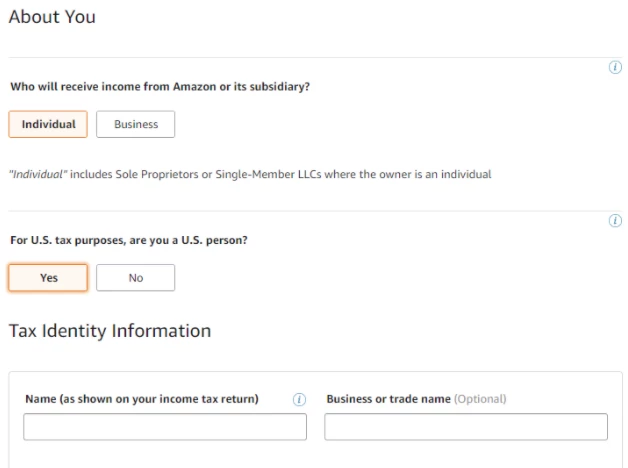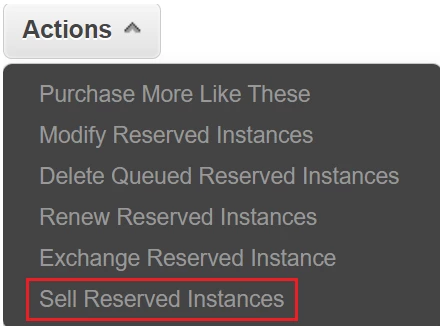
AWS Reserved Instances VS Savings Plans

CTO and Co-founder
AWS Reserved Instance (RI) Marketplace is a virtual market where AWS customers can sell their unused Reserved Instances or buy Reserved Instances from AWS or other third parties.
A Brief History of RIs
AWS introduced RIs more than a decade ago to help customers save EC2 costs. Initially, the service was somewhat rigid as customers couldn’t change the EC2 instance family included in the RI – although instance sizes within the same family could be changed. There were other restrictions also. Standard RI’s still exist, but there’s a more flexible option called Convertible RI. Here, customers can exchange their Convertible Reserved Instances during its term for other Convertible RIs with a new instance family, instance type, tenancy type, or platform.
The Case for Reserved Instance Marketplace
Even with the flexibility of Convertible RIs, AWS customers can often find themselves locked into a 1-year or 3-year contract and spending money they shouldn’t be. To illustrate this, let’s say a company has purchased five r5.4xlarge Standard RIs for running its Kubernetes cluster. Within a few months of purchasing, the company decides to move its workload to Amazon EKS and AWS Fargate. However, there’s a problem now: the Reserved Instances can’t be used for other existing EC2 nodes. None of the other instances are from the r5 family, and besides, they are already running with purchased capacity. Without using the new RIs, the company now has to pay for a capacity they don’t need.
Now let’s consider another scenario. A market research firm needs to run a major polling campaign for three months. The workload will be intensive, and the engineers believe this will require a cluster running two c4.4xlarge nodes. There will be three environments (DEV, TEST, and PROD), each running a separate cluster. The nodes will be removed once the campaign is over. With an on-demand model, the cost will be high, but the company can’t afford to buy Ris for a longer-term contract as it needs the compute capacity only for three months.
In the first case, the AWS customer could save its costs by selling the extra capacity. In the second scenario, the market research firm could bypass a long-term contract if it found six c4.4xlarge nodes’ capacity for three months only.
For both scenarios, AWS RI Marketplace is an ideal solution. Here, the first AWS customer could put up their five RIs for sale. Other organizations looking for similar capacity could purchase the whole or part of these RIs. Similarly, the second company could search for three months’ capacity and buy from a suitable offer.
How to Purchase from the RI Marketplace
The AWS RI Marketplace is available from the EC2 console. A dialog box will appear when you select the “Purchase Reserved Instances” button from the Reserve Instance screen. From here, you can choose the OS, instance type, tenancy, the term of the RI, and the payment option. This is the same interface customers use to buy standard or convertible RIs, except it now allows choosing any term between 1 month to 36 months.
In the image below, we are searching for t2.small Windows nodes. We are interested in any payment term between 1 month to 12 months. There are three listings from AWS for Standard RIs with different payment options. But there’s also a 3rd-party listing that shows three t2.small Windows nodes for sale. Each RI has a payment term of three months. In other words, an AWS customer has put up their reserved capacity for sale, and the term remaining for these RIs is three months. There’s no upfront fee; the buyer has to pay the hourly rate. If we wanted, we could buy all or some of these three RIs.

How to Sell in the RI Marketplace
To sell your Ris in the Marketplace as a 3rd-party, you need to register as a seller. The registration page has to be accessed by the root user of your AWS account. The image below shows the first screen:

It then asks for the seller’s bank details. AWS needs this information to send the proceeds of any sale to the seller’s bank account.

After that, a screen appears where you can click on a button to complete your tax-related information:

After that, AWS verifies the information and completes the registration process, and you are ready to sell in the RI Marketplace.
To sell a Reserved Instance, select the instance from the EC2 Reserved Instances console, and then select the “Sell Reserved Instances” option from the “Actions” menu:

What sellers need to know
AWS stipulates a few conditions for selling in the RI Marketplace.
First, the seller must have a US bank account. The seller can be a non-US citizen or business entity but must have a US bank account to register.
Secondly, only EC2 Standard RIs can be sold in the Marketplace. This is for obvious reasons as EC2 Convertible RIs are more flexible. Also, you can’t sell RDS or Amazon ElastiCache Reserved Instances in the Marketplace.
Third, you can sell up to 5,000 RIs or $50,000 worth of RIs per year. However, you can request AWS to increase both these limits.
Fourth, the RI you want to sell must have at least one month remaining in its term.
Fifth, AWS will charge 12% of the total upfront price of each Standard RI you sell in the Marketplace. AWS retains this as a service fee. The minimum price you can sell an RI is for $0.00.
Sixth, you can sell RIs with no upfront, partial upfront, or all upfront payment option. However, if you are supposed to make an upfront payment for an RI, you can only sell it when AWS has received that payment from you, and you have owned the reservation for at least 30 days.
There are other areas to be aware of too.
- You can’t modify an RI listing in the Marketplace once it’s up for sale. You can, however, cancel the listing and create a new one. To cancel a listing, it has to be in the “active” status. You can’t cancel an RI listing if it’s already matched against a search or currently being processed for sale. If a portion of the reservation count is already sold, you can cancel only the remaining ones in the listing.
- There’s no guarantee your listed RI will sell during its remaining term. As the term decreases for an RI, so does its upfront payment value. AWS can reduce an RI’s price each month by an equal amount unless you set up the adjustment yourself. With the latter approach, you can set up separate upfront prices for different points in the remaining term. For example, you can set one upfront price when the RI has a 1-year term remaining, another upfront price when nine months are remaining, another when six months are remaining, and so on.
Once you sell a Standard RI, any EC2 instance previously attached to it will be charged at an on-demand rate.
Extra tips for sellers
High-end EC2 Standard RIs can sometimes take a long time to sell, as many companies look for small to medium-sized instances for shorter terms. You can use the Linux Instance Size Flexibility feature to convert RIs to smaller instance types before listing for sale.
For example, if you have one Standard RI for a c5.9xlarge EC2 instance, you can convert it to 18 c5.large RIs and list those 18 for sale. That way, there’s a higher possibility of selling at least some RIs and recouping part of the cost.
Bear in mind that converted RIs will have new RI Ids, and they will each be considered a new RI. As a result, they will have to be owned by you for at least 30-days before you can list them for sale.
To choose the right pricing for your RIs, consider their payment options. For example, if you bought an RI with no upfront payment, then set the selling price to $0.00 because that’s what you paid for it. Trying to monetize a no upfront RI will make your offer less attractive to buyers.
If you bought the RI with a partial upfront or full upfront payment, you could use a simple formula to price the remaining term.
Let’s say you purchased a t2.large EC2 Standard RI for a 1-year term. You chose to pay partial upfront and paid $120 for it. The RI now has two months remaining in its term. You could calculate the monthly payment to be $10 ($120 / 12 months) and then list it for $20 for a 2-month term and $10 for a 1-month term.
Final thoughts
As you can see, although the concept of the RI Marketplace is simple, the way you sell your unused RIs for recouping maximum value needs some careful calculation and considerations. There’s no guarantee that your pricing model will get the RI sold without loss. Zesty’s data indicates that over 32% of the RI Marketplace offerings are incorrectly priced, causing the sellers to lose money.
Commitment manager by Zesty Automatically purchases and sells Reserved Instances and Savings plans with a buy-back guarantee.
With Zesty, you can achieve over 45% savings, risk-free

Related Articles
-
How Daily Micro-Savings Plans redefine cloud savings
October 27, 2025 -
 Zesty now supports In-Place Pod Resizing for Seamless, Real-Time Vertical Scaling
Zesty now supports In-Place Pod Resizing for Seamless, Real-Time Vertical Scaling
July 30, 2025 -
 Kubernetes Updates – June
Kubernetes Updates – June
July 16, 2025 -
 The endless cycle of manual K8s cost optimization is costing you
The endless cycle of manual K8s cost optimization is costing you
July 2, 2025 -
 Kubernetes Updates – April 2025
Kubernetes Updates – April 2025
May 21, 2025




